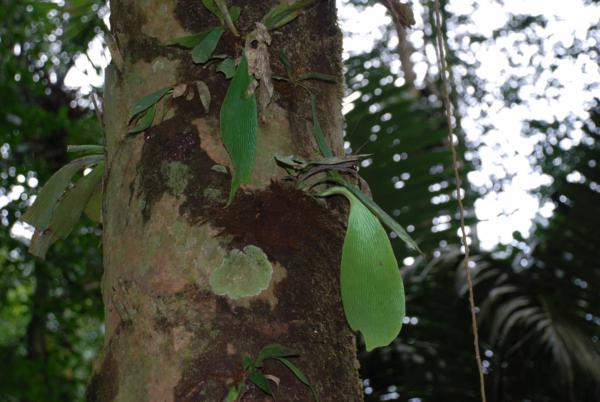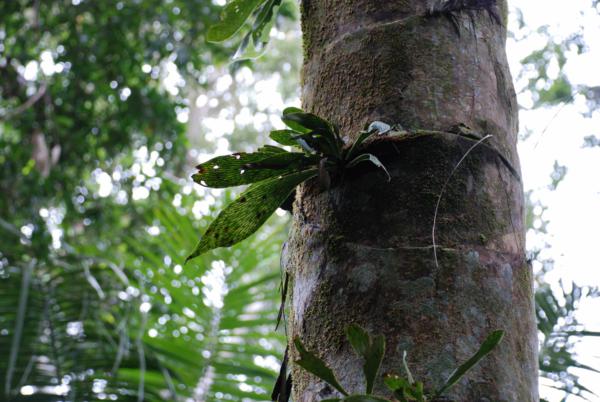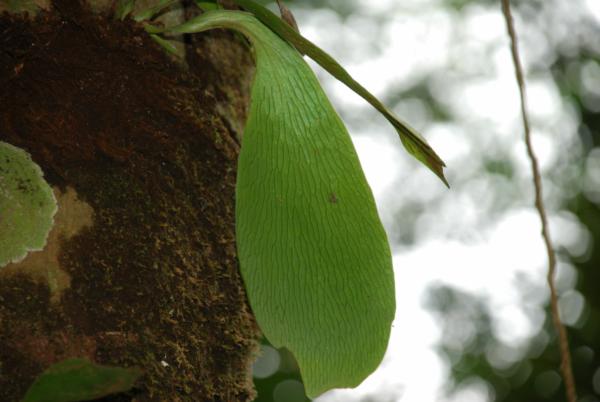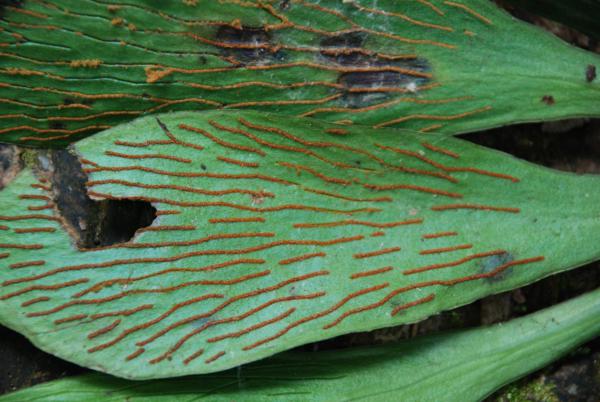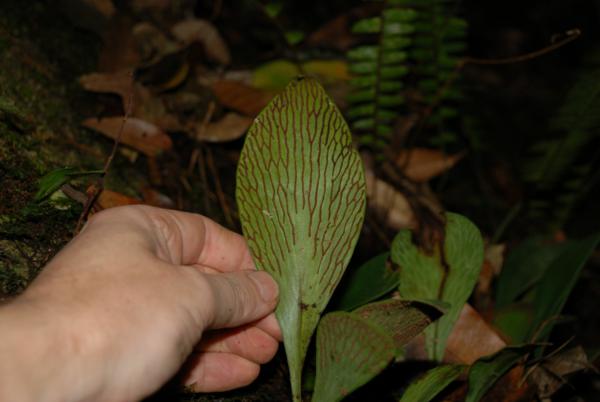
Antrophyum callifolium Blume
Family
Pteridaceae, subfamily Vittarioideae
Nomenclature
Antrophyum callifolium Blume, Enum. Pl. Javae.: 111. 1828; Blume, Fl. Javae Fil.: 83, t. 35. 1829; Tardieu & C.Chr., Fl. Indo-Chine 7(2): 204. 1940; Holttum, Rev. Fl. Malaya ed. 1, 2: 605, f. 356. 1955 [‘1954’]; Holttum, Dansk Bot. Ark. 23: 244. 1965; Tagawa & K.Iwats., SouthE. Asian Stud. 3(3): 89. 1965; Tagawa & K.Iwats., SouthE. Asian Stud. 5: 110. 1967; Tagawa & K.Iwats., Fl. Thailand 3: 221. 1985; Boonkerd & Pollawatn, Pterid. Thailand: 133. 2000.
Antrophyum callifolium var. germainii C.Chr. & Tardieu, Notul. Syst. 7: 13. 1938; Tardieu & C.Chr., Fl. Indo-Chine 7(2): 204. 1940.
Antrophyum annamense C.Chr. & Tardieu, Notul. Syst. 7: 13. 1938; Tardieu & C.Chr., Fl. Indo-Chine 7(2): 204. 1940.
Antrophyum reticulatum auct. non (G.Forst.) Kaulf.: Bedd., Handb. Ferns Brit. India: 401, f. 235. 1883; Christ, Bot. Tidsskr. 24: 104. 1901; C.Chr., Bot. Tidsskr. 32: 348. 1916; E.Smith, J. Siam Soc. Nat. Hist. Suppl. 8: 7. 1929.
Antrophyum semicostatum auct. non Blume: Bonap., Notes Ptérid. 14: 63. 1923.
Antrophyum coriaceum auct. non (D.Don) Wall. ex T.Moore: Tardieu & C.Chr., Notul. Syst. (Paris) 7: 14. 1938, p.p. (specimen form Cambodia); Tardieu & C.Chr., Fl. Indo-Chine 7(2): 203. 1940, p.p.
Antrophyum sp.: Holttum, Dansk Bot. Ark. 20: 34. 1961.
Description
Epiphytic or lithophytic. Rhizome short creeping, bearing a few to several fronds in a tuft, scaly; scales narrowly subtriangular, gradually narrowing from base towards long-tailed apex, up to 5 by 0.8 mm, dark brown to blackish, sharply toothed at margin. Stipes short, indistinctly merging with the basal portion of frond, scaly. Frond variable in outline, usually oblong-lanceolate to broadly oblanceolate, gradually narrowing towards acuminate apex, gradually narrowing downwards, up to 30 by 8 cm, but soriferous even when less than 5 cm, leathery; costa distinct only in the lowest portion of fronds; veins more or less distinct, evenly anastomosing without included veinlets. Sori linear, anastomosing along veins, usually on the whole undersurface except for the lowest middle portion, i.e. near costa; paraphyses filamentous , long, numerous.
Distribution in Thailand
NORTHERN: Chiang Mai, Tak; NORTH-EASTERN: Loei, Nong Khai; SOUTH-WESTERN: Kanchanaburi, Phetchaburi; CENTRAL: Nakhon Nayok; SOUTH-EASTERN: Chanthaburi, Trat; PENINSULAR: Chumphon, Ranong, Surat Thani, Nakhon Si Thammarat, Phangnga, Phuket, Trang, Satun, Yala, Narathiwat.
Distribution in Cambodia
Kampot, Siem Reap
Wider Distribution
Widely known from the tropics of the Old World, although the exact boundary is not clear.
Ecology
On muddy rocks or on mossy tree trunks usually in dense evergreen forests at low or medium altitudes.
Proposed IUCN Conservation Assessment
Least Concern (LC). This species is common and widespread.
Notes
The size and form of fronds is very variable.
Voucher specimens - Thailand
Middleton et al. 4608, Trat, Ko Chang, Thanmagon Waterfall (E).
Voucher specimens - Cambodia
Poilane 15242 (P).
Habit
Habit
Habit
Lower surface of frond
Reticulate pattern of sori
Site hosted by the Royal Botanic Garden Edinburgh. Content managed by Stuart Lindsay, Gardens by the Bay, Singapore and David Middleton, Singapore Botanic Gardens. Last updated 24 January 2012
